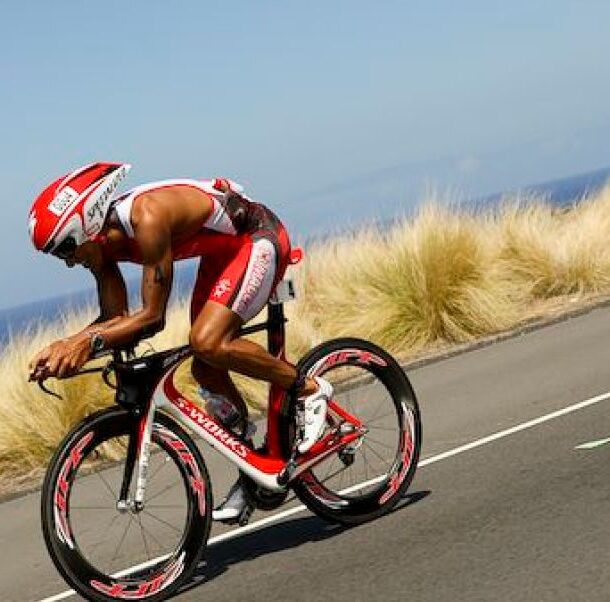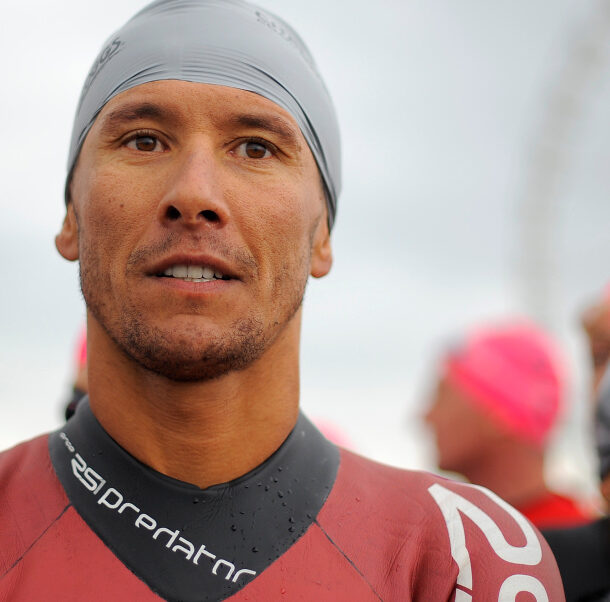
(Originally published in Triathlete Magazine May 2013.)
The difference between a good race and a bad race is all about how you manage the (inevitable) pain.
I have never been one to invoke affirmations. I understand their purpose, I just never really needed to give myself these motivational kicks. I was always a self-starter and confident in my training and my direction that I always felt that I owned my destiny to some degree. That all changed when I started racing Ironman in 2002.
I believed that my understanding of what made me go fast was pretty simple. I trained hard, raced as quick as I could, and then when things got tough in the final 10–15 minutes of a race, I just closed my eyes and focused until the finish line came. I was winning short-course races all over the world every weekend, and I figured my system was bulletproof: Train for a big punch, deliver that punch on race day, and the rest will sort itself out.
The difference with racing an Ironman was that the distance introduced a completely foreign pain. An emotional fatigue creeps up on you and, over time, weighs you down slowly. When you add this to a fatiguing body, the cocktail of pain is so horrible that it exposes any weakness in your character. You simply cannot train hard enough to beat this. It requires a completely cerebral approach to conquer. The first time I ever tasted this emotional fatigue in a race was in my first Ironman. I cruised through seven hours of the race, and with 10 miles left to run, I led by more than 10 minutes. In the space of 200 meters I went from thinking I was going to win to wondering how I was going to make it to the finish line. It was a point of absolute panic—a place I had not prepared for at all, and was inexperienced at facing.
I won the race, but the experience was horrific. I had lost nine minutes to the guys chasing me in the last 15K and raced in a dark place for a long time. I walked away from that event quite burned by the experience. It was during this time I developed my first-ever affirmation that helped me understand what I needed to do when faced with this again: “Embrace the suck.”
Ultimately triathlon is about pain—how you endure it and the mechanisms you put in place to deal with it when it comes. But for most of us, understanding what those mechanisms are and how to implement them isn’t something we do. We are always more concerned about counting miles and training sessions in order to reach a set target of training sessions. But it is not these that stop us or limit us on race day; it is how we deal with the pain when it presents itself that will ultimately determine our race result. As I began to think about it more, I realized that no matter how much I loved racing or how hard I trained, at some point a race is going to really suck. It is how I reacted to this moment that determined everything.
Our biggest challenge in triathlon is overcoming that part of your mind that tells you to slow down or stop. I have found that the best way to achieve this is to accept (or “embrace”) that moment of absolute suffering. Treat pain like an old friend. It’s not that you enjoy suffering, but when you accept it as a moment that signifies that you are pushing yourself and advancing toward your goal, then you have begun to approach pain management from the right direction.
You have to start planning for pain and understand how you deal with it when it comes. In training, do those sessions that find pain quickly, and then take note of where your thoughts go. It is only when you are there that you can begin to implement the systems that help you better deal with it. No longer deny that you can train hard enough to avoid pain during a race or somehow prevent it from coming. Just accept now that it is part of the process and look forward to that moment. I have found the most successful pain strategy for me involves self-talk and a checklist. Everything I tell myself at that moment in a race is upbeat and positive. Pain is my friend, and I treat it that way. As it presents itself, I smile and say things like “OK, here you are. I have been waiting for you.” Then I run through my checklist.
Rhythm: I concentrate on my breathing. Is that under control? I find starting with breathing is soothing. Next, nutrition: “How do I feel? Is my blood sugar down? Let’s take a gel and boost those levels. Check!” If I am running I will focus then on my stride pattern and my stride frequency. I count my steps and find my run rhythm again. When I feel like I have it, I tell myself such. “That’s great, there it is. Check!” You run down the list, and by the time you get to the end of it, the finish line is a close, encouraging reality.
Your body is not that smart. It will begin to do anything your mind tells it to do, so make sure you continue to treat the entire experience like something that you control. Never lose control of your mind when things get really tough. Endorphins will kick in after a while and suddenly you’re back in the game.
The common theme in every battle with pain I have ever won was my mind-set. It was only those times when I allowed the fear of the moment to manifest big enough in my own head—when I didn’t think I could fully beat the problem with my self-talk and my checklist—that the battle was lost.
In your next event, make sure when you are pushed up against a wall by that moment in a race, greet it with a smile, implement your systems and come out the other side a winner. When you conquer this moment, it’s greater than any finish line.
Philosophy
“Great things happen to people who make great things happen.”
Navigate
chris@macca.com
Terms & Conditions
Privacy Policy

